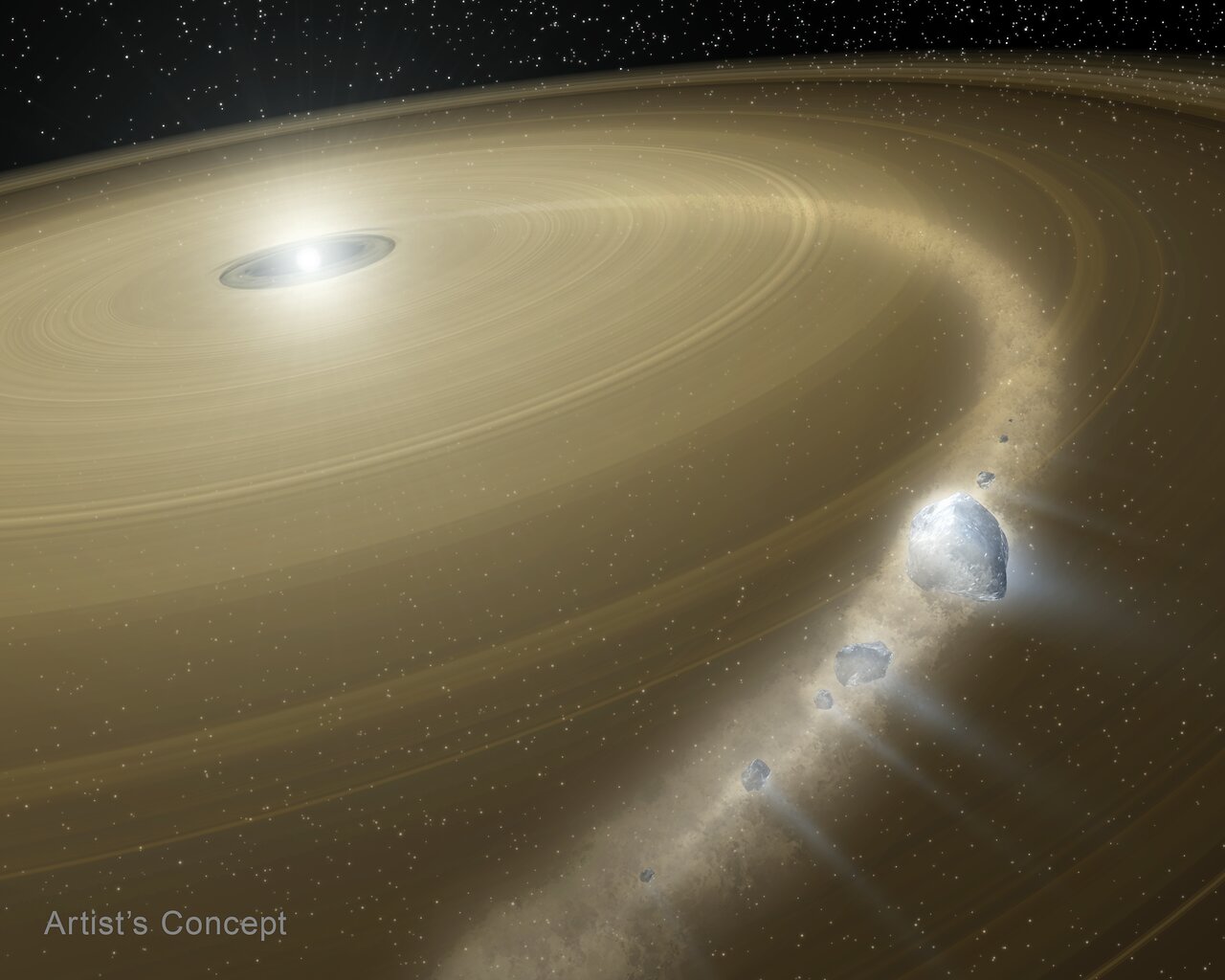- Final showdown in Boka Bay The Ocean Race
- Finale for The Ocean Race Europe 2025 Scuttlebutt Sailing News
- Too Close to Call as Team Holcim-PRB Stage Fairytail Comeback South of Sicily Pressmare
- The Ocean Race: Canada Ocean Racing Secures Sixth In Boka Bay nautica news
- Biotherm win final leg to seal dominant overall victory in The Ocean Race Europe 2025 Sail-World.com
Blog
-
Final showdown in Boka Bay – The Ocean Race
-

Tiny Protein Pairs Key to Life’s Origin
Genes are the building blocks of life, and the genetic code provides the instructions for the complex processes that make organisms function. But how and why did it come to be the way it is? A recent study from the University of Illinois Urbana-Champaign sheds new light on the origin and evolution of the genetic code, providing valuable insights for genetic engineering and bioinformatics.
“We find the origin of the genetic code mysteriously linked to the dipeptide composition of a proteome, the collective of proteins in an organism,” said corresponding author Gustavo Caetano-Anollés, professor in the Department of Crop Sciences, the Carl R. Woese Institute for Genomic Biology, and Biomedical and Translation Sciences of Carle Illinois College of Medicine at U. of I.
Caetano-Anollés’ work focuses on phylogenomics, which is the study of evolutionary relationships between the genomes of organisms. His research team previously built phylogenetic trees mapping the evolutionary timelines of protein domains (structural units in proteins) and transfer RNA (tRNA), an RNA molecule that delivers amino acids to the ribosome during protein synthesis. In this study, they explored the evolution of dipeptide sequences (basic modules of two amino acids linked by a peptide bond), finding the histories of domains, tRNA, and dipeptides all match.
Life on Earth began 3.8 billion years ago, but genes and the genetic code did not emerge until 800,000 million years later, and there are competing theories about how it happened.
Some scientists believe RNA-based enzymatic activity came first, while others suggest proteins first started working together. The research of Caetano-Anollés and his colleagues over the past decades supports the latter view, showing that ribosomal proteins and tRNA interactions appeared later in the evolutionary timeline.
Life runs on two codes that work hand in hand, Caetano-Anollés explained. The genetic code stores instructions in nucleic acids (DNA and RNA), while the protein code tells enzymes and other molecules how to keep cells alive and running. Bridging the two is the ribosome, the cell’s protein factory, which assembles amino acids carried by tRNA molecules into proteins. The enzymes that load the amino acids onto the tRNAs are called aminoacyl tRNA synthetases. These synthetase enzymes serve as guardians of the genetic code, monitoring that everything works properly.
“Why does life rely on two languages – one for genes and one for proteins?” Caetano-Anollés asked. “We still don’t know why this dual system exists or what drives the connection between the two. The drivers couldn’t be in RNA, which is functionally clumsy. Proteins, on the other hand, are experts in operating the sophisticated molecular machinery of the cell.”
The proteome appeared to be a better fit to hold the early history of the genetic code, with dipeptides playing a particularly significant role as early structural modules of proteins. There are 400 possible dipeptide combinations whose abundances vary across different organisms.
The research team analyzed a dataset of 4.3 billion dipeptide sequences across 1,561 proteomes representing organisms from the three superkingdoms of life: Archaea, Bacteria, and Eukarya. They used the information to construct a phylogenetic tree and a chronology of dipeptide evolution. They also mapped the dipeptides to a tree of protein structural domains to see if similar patterns arose.
In previous work, the researchers had built a phylogeny of tRNA that helped provide a timeline of the entry of amino acids into the genetic code, categorizing amino acids into three groups based on when they appeared. The oldest were Group 1, which included tyrosine, serine, and leucine, and Group 2, with 8 additional amino acids. These two groups were associated with the origin of editing in synthetase enzymes, which corrected inaccurate loading of amino acids, and an early operational code, which established the first rules of specificity, ensuring each codon corresponds to a single amino acid. Group 3 included amino acids that came later and were linked to derived functions related to the standard genetic code.
The team had already demonstrated the co-evolution of synthetases and tRNA in relation to the appearance of amino acids. Now, they could add dipeptides to the analysis.
“We found the results were congruent,” Caetano-Anollés explained. “Congruence is a key concept in phylogenetic analysis. It means that a statement of evolution obtained with one type of data is confirmed by another. In this case, we examined three sources of information: protein domains, tRNAs, and dipeptide sequences. All three reveal the same progression of amino acids being added to the genetic code in a specific order.”
Another novel finding was duality in the appearance of dipeptide pairs. Each dipeptide combines two amino acids, for example, alanine-leucine (AL), while a symmetrical one — an anti-dipeptide — has the opposite combination of leucine-alanine (LA). The two dipeptides in a pair are complementary; they can be considered mirror images of each other.
“We found something remarkable in the phylogenetic tree,” Caetano-Anollés said. “Most dipeptide and anti-dipeptide pairs appeared very close to each other on the evolutionary timeline. This synchronicity was unanticipated. The duality reveals something fundamental about the genetic code with potentially transformative implications for biology. It suggests dipeptides were arising encoded in complementary strands of nucleic acid genomes, likely minimalistic tRNAs that interacted with primordial synthetase enzymes.”
Dipeptides did not arise as arbitrary combinations but as critical structural elements that shaped protein folding and function. The study suggests that dipeptides represent a primordial protein code emerging in response to the structural demands of early proteins, alongside an early RNA-based operational code. This process was shaped by co-evolution, molecular editing, catalysis, and specificity, ultimately giving rise to the synthetase enzymes, the modern guardians of the genetic code.
Uncovering the evolutionary roots of the genetic code deepens our understanding of life’s origin, and it informs modern fields such as genetic engineering, synthetic biology, and biomedical research.
“Synthetic biology is recognizing the value of an evolutionary perspective. It strengthens genetic engineering by letting nature guide the design. Understanding the antiquity of biological components and processes is important because it highlights their resilience and resistance to change. To make meaningful modifications, it is essential to understand the constraints and underlying logic of the genetic code,” Caetano-Anollés said.
The paper, “Tracing the origin of the genetic code and thermostability to dipeptide sequences in proteomes,” is published in the Journal of Molecular Biology Authors include Minglei Wang, M. Fayez Aziz and Gustavo Caetano-Anollés.
The study was supported by grants from the National Science Foundation (MCB-0749836 and OISE-1132791), the United States Department of Agriculture (ILLU-802-909 and ILLU-483-625) and Blue Waters supercomputer allocations from the National Center for Supercomputing Applications to Caetano-Anollés.
/Public Release. This material from the originating organization/author(s) might be of the point-in-time nature, and edited for clarity, style and length. Mirage.News does not take institutional positions or sides, and all views, positions, and conclusions expressed herein are solely those of the author(s).View in full here.Continue Reading
-

Five things to watch on day seven at WCH Tokyo 25 | News | Tokyo 25
Friday (19) marks day seven of the World Athletics Championships Tokyo 25. And this time five different athletes will be crowed world champion inside the Japan National Stadium.
Lyles eyes Bolt
On the evidence of Thursday night’s semifinals, Noah Lyles looks the man to beat in the men’s 200m after a blistering run of 19.51 to eclipse his world lead set at the US Trials. It is the fastest ever semifinal performances in the history of any championships.
Lyles is bidding to emulate Usain Bolt with a fourth straight world title in that particular event, but there are a variety of challengers in that quest.
Jamaica’s Bryan Levell impressed with a 19.78 semifinal win, while Kenny Bednarek, who had an under par 100m final, was third quickest of the semifinalists in 19.88. Olympic champion Letsile Tebogo, disqualified in the 100m for a false start, and Britain’s Zharnel Hughes were next best.
Jackson targets hat-trick
A mere hundredth of a second separated the top two going into the final of the women’s 200m, with defending champion Shericka Jackson just a whisker ahead of Melissa Jefferson-Wooden.
Jamaican Jackson is bidding to match Allyson Felix’s record of a third straight world title over the distance, while US athlete Jefferson-Wooden is targeting the sprint double after her 100m success.
Others impressing in the semifinals included Amy Hunt of Great Britain and US runner Anavia Battle, who both clocked the same time: 22.09.
Big three do battle
The big three of the men’s 400m hurdles again converge for another final, on the track where all three of them dipped under Kevin Young’s previous world record mark in a blistering Olympic final four years ago.
Brazil’s Alison dos Santos didn’t look at his best in his semifinal, so one could argue he is a little off the pace of Karsten Warholm and Rai Benjamin.
Norway’s Warholm is the quickest man in the world this year, his 46.28 ran so recently in Silesia, and he backed that up with victory in Zurich. But Benjamin’s season’s best of 46.54 is not a million miles away.
Bol on course for defence
Femke Bol has looked imperious all season long, extending that dominance to the women’s 400m hurdles rounds in Tokyo. It begs asking the question if anyone can stop the Dutch athlete in her stride.
The 25-year-old had won eight straight races this season before coming to Tokyo and, with USA’s Sydney McLaughlin-Levrone focusing on the 400m flat at this championships, it’s hard to see who might push Bol.
Olympic and world gold medallist Dalilah Muhammad is among those hoping to pull off a big shock at the age of 35, while her fellow US athlete Anna Cockrell is ranked No.2 in the world this year behind Bol.
Diaz targets 2025 world double
If the form book is anything to go by, Italy’s Andy Diaz Hernandez is the favourite for men’s triple jump gold. He won the world indoor title with a leap of 17.80m, a career best and the world lead this year, and could complete the double in 2025 by winning the outdoor crown.
In addition, the 29-year-old Italian clinched his third Diamond League Final win this season, but there are no shortage of candidates lining up to topple him.
Portugal’s 2022 world champion Pedro Pichardo won Olympic gold at this same venue, while Jamaican Jordan Scott has got into the winning habit with a quartet of victories in the Diamond League in 2025.
Matt Majendie for World Athletics
If you don’t want to miss these events, you can sync your calendar to receive a notification right before they start.
Continue Reading
-

Dentons advises Acuity Knowledge Partners on its acquisition of Ascent
Leaving DentonsBeijing Dacheng Law Offices, LLP (“大成”) is an independent law firm, and not a member or affiliate of Dentons. 大成 is a partnership law firm organized under the laws of the People’s Republic of China, and is Dentons’ Preferred Law Firm in China, with offices in more than 40 locations throughout China. Dentons Group (a Swiss Verein) (“Dentons”) is a separate international law firm with members and affiliates in more than 160 locations around the world, including Hong Kong SAR, China. For more information, please see dacheng.com/legal-notices or dentons.com/legal-notices.
Continue Reading
-

Poor coal economics to cost West Virginia electricity consumers
West Virginia customers of Appalachian Power and Wheeling Power (American Electric Power’s subsidiaries in the state) will pay tens of millions of dollars more in electric rates because of economic losses at the companies’ coal-fired power plants.
The coal plants in question are John Amos, Mitchell and Mountaineer. The three-unit Amos plant has 2,900 megawatts (MW) of net summer capacity; the two-unit Mitchell plant has 1,560MW of capacity; and the single-unit Mountaineer plant has 1,299MW of capacity. The age range of the six units ranges from 45 to 54 years.
Why did these utilities run their coal plants at a loss? To burn coal. This is the second consecutive year that AEP has found itself in the situation of having contracted for significantly more coal than needed to operate the plants economically. To avoid exceeding the physical limits for its coal stockpiles at the plants, the utility ran them even at times when it did not make economic sense.
Between March 2024 and February 2025, the three coal plants incurred $66 million in losses from the difference between the revenue earned from selling electricity into the regional market and the cost of operating the units. As IEEFA testified to the West Virginia Public Service Commission, West Virginia electricity customers will pick up the tab for $36 million (the utility also has customers in other states).
In part, this reflects the ongoing poor economics of coal plants. Natural gas plants continue to out-compete coal on an economic basis. During the year from March 2024 to February 2025, the coal plants’ costs averaged more than market prices for all months except January and February, when cold winter temperatures (including a polar vortex) drove up energy market prices.
The losses also reflect poor foresight on the part of AEP, given that the declining economics of coal generation is a longstanding trend. Utilization of coal units in PJM (the regional electricity market covering D.C. and parts of 13 states, including all of West Virginia) has been on a downward trajectory since 2014, as shown in the following graph. Yet this is the second year in a row that Appalachian Power and Wheeling Power have found themselves in the position of having bought too much coal. Between March 2023 and February 2025, the losses at the coal units totaled more than $150 million.
As IEEFA reported in December 2024, excessive coal inventories are an industry-wide phenomenon, a result of the declining economics of coal and increasing competition from gas and renewable energy sources. Excess coal inventories are posing a challenge not only for utilities, but also for coal producers trying to sell into an oversupplied market.
Continue Reading
-

Hubble sees white dwarf eating piece of Pluto-like object
heic2511 — Science Release
18 September 2025
In our nearby stellar neighbourhood, a burned-out star is snacking on a fragment of a Pluto-like object. With its unique ultraviolet capability, only the NASA/ESA Hubble Space Telescope could identify that this meal is taking place.
The stellar remnant is a white dwarf about half the mass of our Sun, but that is densely packed into a body about the size of Earth. Scientists think the dwarf’s immense gravity pulled in and tore apart an icy Pluto analogue from the system’s own version of the Kuiper Belt, an icy ring of debris that encircles our Solar System. The findings were reported on 18 September 2025 in the Monthly Notices of the Royal Astronomical Society.
An international team of astronomers were able to determine this carnage by analysing the chemical composition of the doomed object as its pieces fell onto the white dwarf. In particular, they detected “volatiles” (substances with low boiling points) including carbon, sulphur, nitrogen, and a high oxygen content that suggests the strong presence of water.
“We were surprised,” said Snehalata Sahu of the University of Warwick in the United Kingdom. Sahu led the data analysis of a Hubble survey of white dwarfs. “We did not expect to find water or other icy content. This is because the comets and Kuiper Belt-like objects are thrown out of their planetary systems early, as their stars evolve into white dwarfs. But here, we are detecting this very volatile-rich material. This is surprising for astronomers studying white dwarfs as well as exoplanets, planets outside our Solar System.”
Only with Hubble
Using Hubble’s Cosmic Origins Spectrograph, the team found that the fragments were composed of nearly two thirds water ice. The fact that they detected so much ice meant that the pieces were part of a very massive object that formed far out in the star system’s icy Kuiper Belt analogue. Using Hubble data, scientists calculated that the object was bigger than typical comets and may be a fragment of an exo-Pluto.
They also detected a large fraction of nitrogen – the highest ever detected in white dwarf debris systems. “We know that Pluto’s surface is covered with nitrogen ices,” said Sahu. “We think that the white dwarf accreted fragments of the crust and mantle of a dwarf planet.”
Accretion of these volatile-rich objects by white dwarfs is very difficult to detect in visible light. These volatile elements can only be detected with Hubble’s unique ultraviolet light sensitivity. In optical light, the white dwarf would appear ordinary.
About 260 light-years away, the white dwarf is a relatively close cosmic neighbor. In the past, when it was a Sun-like star, it would have been expected to host planets and an analogue to our Kuiper Belt.
Like seeing our Sun in the future
Billions of years from now, when our Sun burns out and collapses to a white dwarf, Kuiper Belt objects will be pulled in by the stellar remnant’s immense gravity. “These planetesimals will then be disrupted and accreted,” said Sahu. “If an alien observer looks into our Solar System in the far future, they might see the same kind of remains we see today around this white dwarf.”
The team hopes to use the NASA/ESA/CSA James Webb Space Telescope to detect molecular features of volatiles such as water vapour and carbonates by observing this white dwarf in infrared light. By further studying white dwarfs, scientists can better understand the frequency and composition of these volatile-rich accretion events.
Sahu is also following the recent discovery of the interstellar comet 3I/ATLAS. She is eager to learn its chemical composition, especially its fraction of water. “These types of studies will help us learn more about planet formation. They can also help us understand how water is delivered to rocky planets,” said Sahu.
Boris Gänsicke, of the University of Warwick and a visitor at Spain’s Instituto de Astrofisica de Canarias, was the principal investigator of the Hubble program that led to this discovery. “We observed over 500 white dwarfs with Hubble. We’ve already learned so much about the building blocks and fragments of planets, but I’ve been absolutely thrilled that we now identified a system that resembles the objects in the frigid outer edges of our solar system,” said Gänsicke. “Measuring the composition of an exo-Pluto is an important contribution toward our understanding of the formation and evolution of these bodies.”
More information
The Hubble Space Telescope is a project of international cooperation between ESA and NASA.
Image Credit: T. Pyle (Caltech, NASA’s Jet Propulsion Laboratory)
Links
Contacts
Bethany Downer
ESA/Hubble Chief Science Communications Officer
Email: [email protected]Continue Reading
-

Thomas Wolf of Hugging Face on the Future of Open AI at Disrupt 2025
AI is moving fast — but who decides how it’s built, shared, and scaled? At TechCrunch Disrupt 2025, happening October 27-29 at San Francisco’s Moscone West, we’re diving in with Thomas Wolf, co-founder and chief science officer of Hugging Face, for a session on what it takes to make cutting-edge research and models that are truly open and accessible. Catch him on the AI Stage, along with thousands of other like-minded tech leaders and innovators.
Why you can’t miss this session
The future of AI won’t just be defined by closed labs and Big Tech budgets — it will be written in open source repos, global research collaborations, and moonshot experiments that anyone can build on. Wolf brings a rare perspective on how to bridge research, community, and real-world applications in ways that shape both the technology and the ecosystem around it.
Whether you’re a founder, developer, or investor, this session offers a clear view of where AI is headed — and how openness can drive the next wave of breakthroughs.
The architect behind today’s AI breakthroughs
Wolf has been at the center of some of the most important advances in AI. At Hugging Face, he helped launch the Transformers and Datasets libraries, led the BigScience Workshop on large language models that produced BLOOM, and has championed open science across industry and academia. He’s also co-author of “Natural Language Processing with Transformers” and “The Ultra-Scale Playbook,” resources shaping how the next generation of AI practitioners learn and build.
Secure your discounted pass and see Thomas Wolf live on the AI Stage
Join 10,000+ startup and VC leaders October 27–29 at Moscone West in San Francisco, with headline-making sessions, hands-on discussions, and intentional networking designed to fuel your next move. Disrupt 2025 is where the future of tech gets built and where we celebrate 20 years of TechCrunch. Lock in your pass now to save up to $668 before savings end on September 26 at 11:59 p.m. PT.
Image Credits:Kimberly White / Getty Images Continue Reading
-

What time is the partial solar eclipse on Sept. 21?
The path of the partial solar eclipse on Sept. 21, 2025. (Image credit: Fred Espenak and Michael Zeiler, licensed under a Creative Commons Attribution-NoDerivatives 4.0 International License. Based on work at EclipseWise.com and GreatAmericanEclipse.com) The moon will appear to take a “bite” out of the sun during a deep partial solar eclipse on Sept. 21.
Globally, September’s partial solar eclipse will begin at 1:29 p.m. EDT (1729 GMT), with the maximum eclipse phase — when the moon covers the largest portion of the sun — occurring at 3:41 p.m. EDT (1941 GMT). However, exact timings vary by location. A detailed breakdown of eclipse times for different countries can be found in the table below. For a full breakdown, see Time and Date.
Only 16.6 million people, 0.2% of the world’s population, live in areas where at least part of the solar eclipse will be visible, according to Time and Date. If you’re not one of the lucky few in the path of the partial solar eclipse, you can watch all the action unfold live here on Space.com. Details to be released closer to the time. You can also keep up with the latest eclipse news and updates with our partial solar eclipse live blog
Swipe to scroll horizontallyTime of partial solar eclipse by country (in local time) Country
Start of eclipse (local time)
End of eclipse (local time)
Antarctica
4:49 a.m.
6:53 p.m.
Australia
6:13 a.m.
7:36 a.m.
Fiji
5:42 a.m.
7:27 a.m.
New Zealand
5:41 a.m.
8:36 a.m.
Samoa
6:29 a.m.
8:09 a.m.
For each country, the ‘start’ time marks when the eclipse first becomes visible at the earliest location within that country, while the ‘end’ time marks when it finishes at the last location still able to see it.”
How to watch the eclipse safely
Never use regular sunglasses to observe the sun. The only safe way to look directly at the sun is through specifically designed solar filters, using solar eclipse glasses for direct viewing and solar filters for telescopes and binoculars.
We have rounded up some of the best solar viewing kit deals available for you to make the most of your next sun viewing experience. Check out our how to view the sun safely guide for more advice on what to look out for during your next solar viewing venture.
Editor’s Note: If you snap a photo of the solar eclipse and would like to share it with Space.com’s readers, send your photo(s), comments, and your name and location to spacephotos@space.com.
Continue Reading
-

How Nobel-winning biologist David Baltimore helped the rise of science in China
David Baltimore, the Nobel Prize-winning American biologist who died this month at 87, built a legacy in China through decades of scientific exchange that helped the country rise as a global powerhouse in life sciences.
Baltimore revolutionised gene research in his 30s and went on to mentor dozens of Chinese researchers and advise on the creation of top research institutions in the nation. His final paper was published in a Chinese journal.
Since his passing, scientists in China and Chinese-American researchers have remembered him for strengthening the country’s scientific foundation and fostering collaboration across borders.
Cheng Genhong, an immunologist and one of Baltimore’s former students who has worked in both the US and China, said in a tribute that Baltimore’s scientific vision and humanistic spirit had a profound impact on the global research community, especially in China.
“Dr Baltimore visited China many times, with his footprints across numerous universities and research institutes,” wrote Cheng, now head of the Suzhou Institute of Systems Medicine, which Baltimore helped establish. “He enjoyed face-to-face exchanges with students and faculty, gave thought-provoking talks, and tirelessly built bridges for collaboration.
“His contributions went far beyond the usual duties of an academic adviser, reflecting his genuine belief that science knows no borders and his deep desire to create pathways for young talent around the world – a legacy that commands lasting admiration.”
Continue Reading
-

Nvidia to invest $5bn in Intel after Trump administration’s 10% stake | Business
Nvidia, the world’s leading chipmaker, announced plans to invest $5bn in Intel and collaborate with the struggling semiconductor company on products.
One month after the Trump administration confirmed it had taken a 10% stake in Intel – the latest extraordinary intervention by the White House in corporate America – Nvidia said it would team up with the firm to work on custom data centers that form the backbone of artificial intelligence (AI) infrastructure, as well as personal computer products.
Shares in Intel surged 29% during pre-market trading in New York. Nvidia rose almost 3%, bolstering its $4tn market value.
Nvidia said it will spend $5bn to buy Intel common stock at $23.28 a share. The investment is subject to regulatory approvals.
“This historic collaboration tightly couples NVIDIA’s AI and accelerated computing stack with Intel’s CPUs and the vast x86 ecosystem – a fusion of two world-class platforms,” Nvidia CEO Jensen Huang said. “Together, we will expand our ecosystems and lay the foundation for the next era of computing.”
The two companies said they will work on “seamlessly connecting” their architectures.
For data centers, Intel will make custom chips that Nvidia will use in its AI infrastructure platforms. while for PCs products, Intel will build chips that integrate Nvidia technology.
The agreement provides a lifeline for Intel, which was a Silicon Valley pioneer that enjoyed decades of growth as its processors powered the personal computer boom, but fell into a slump after missing the shift to the mobile computing era unleashed by the iPhone’s 2007 debut.
Intel fell even farther behind in recent years amid the AI boom that’s propelled Nvidia into the world’s most valuable company. Intel lost nearly $19bn last year and another $3.7bn in the first six months of this year, and expects to slash its workforce by a quarter by the end of 2025.
Nvidia, meanwhile, has soared because its specialized chips are underpinning the artificial intelligence boom. The chips, known as graphics processing units, or GPUs, are highly effective at developing powerful AI systems.
Dan Ives, tech analyst at Wedbush, said: “With AI infrastructure investments continuing to grow with the company expecting between $3tn to $4tn in total AI infrastructure spend by the end of the decade, the chip landscape remains [Nvidia’s] world, with everybody else paying rent, as more sovereigns and enterprises wait in line for the most advanced chips in the world.”
Associated Press contributed reporting
Continue Reading